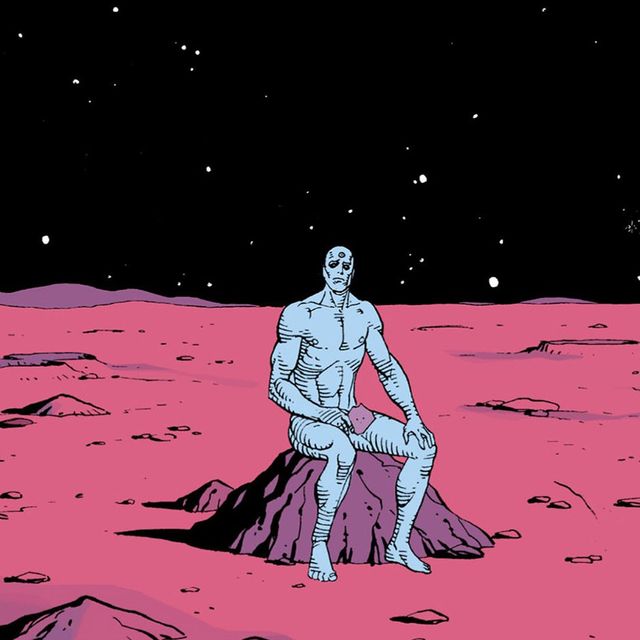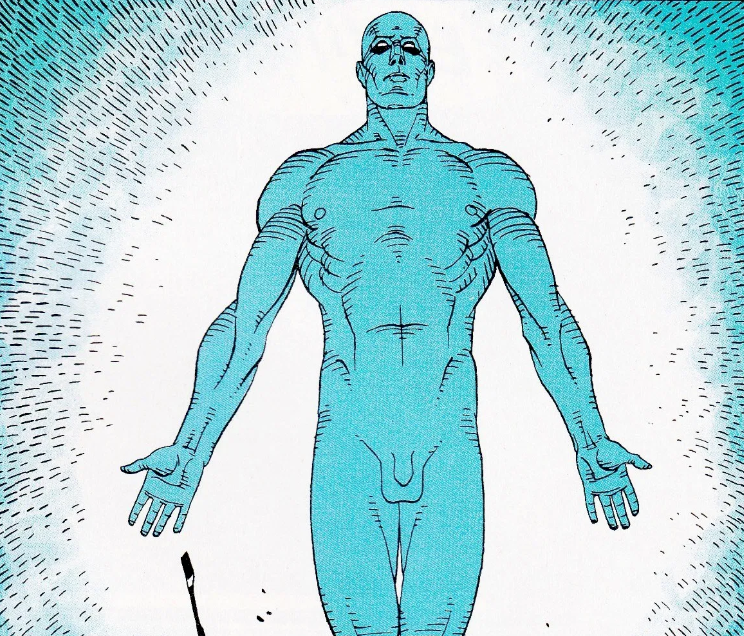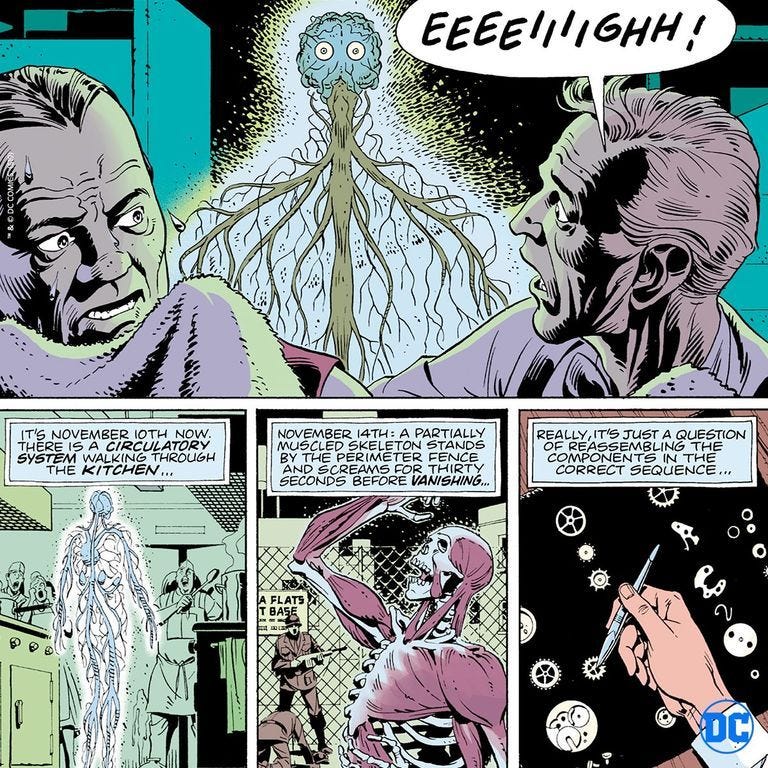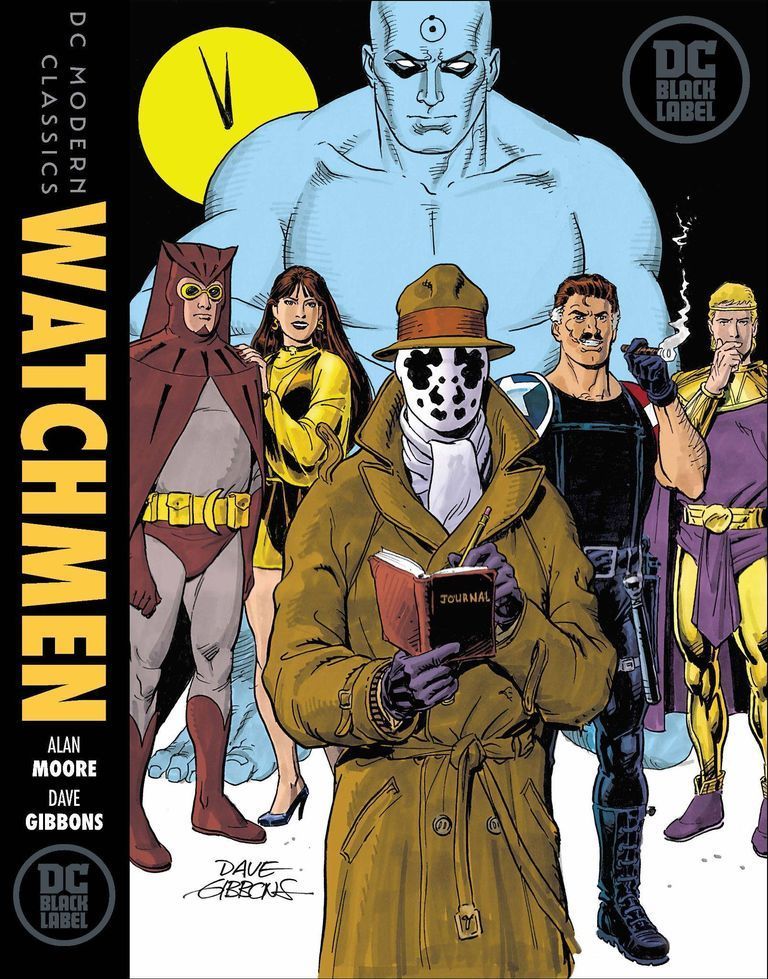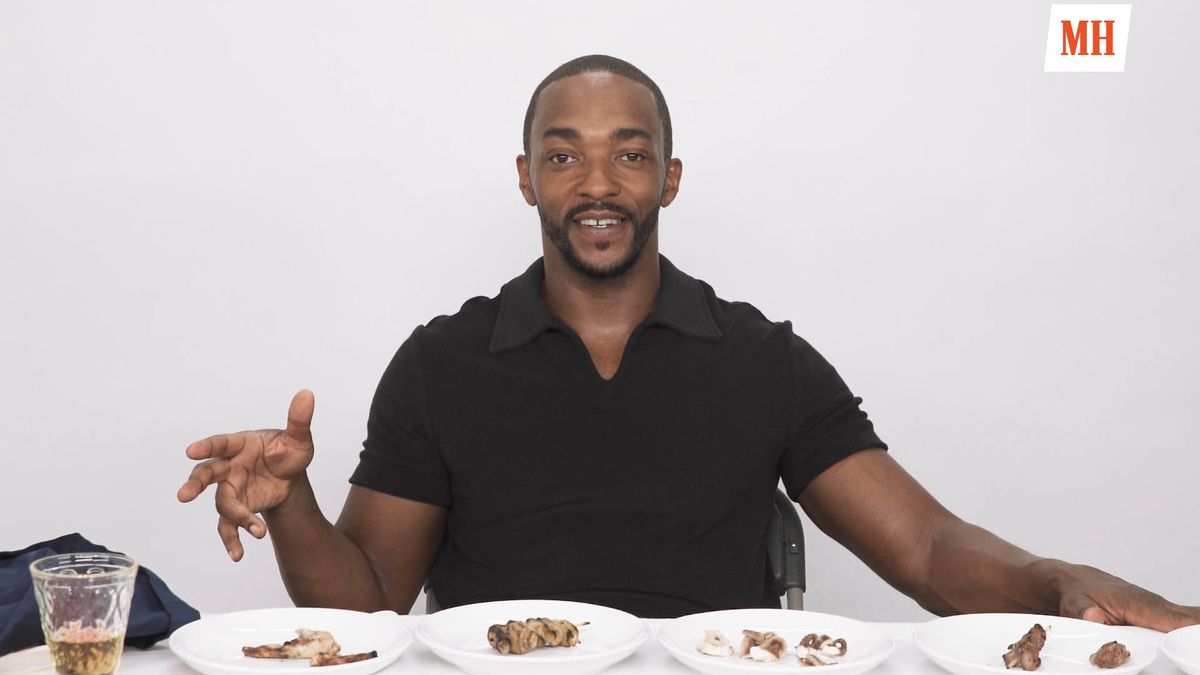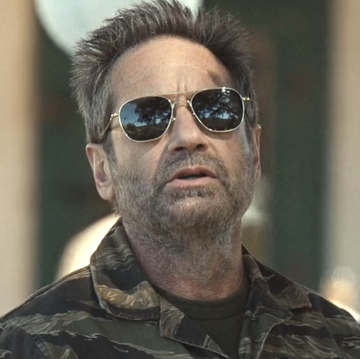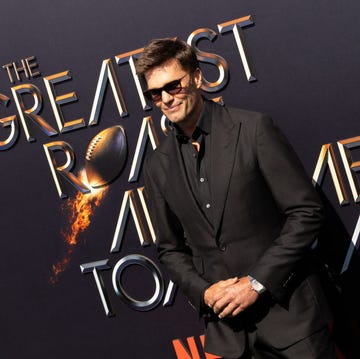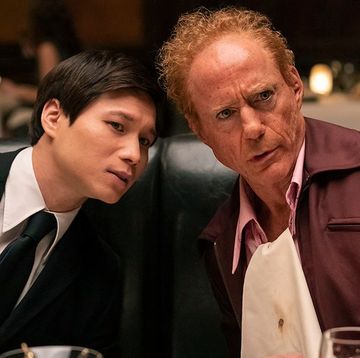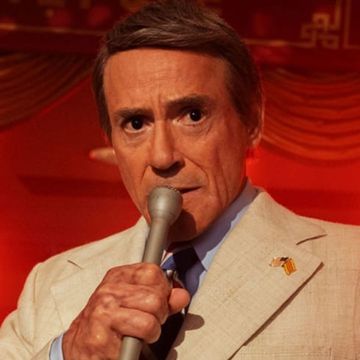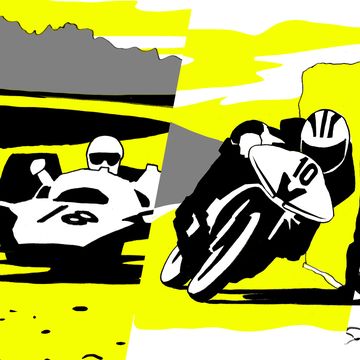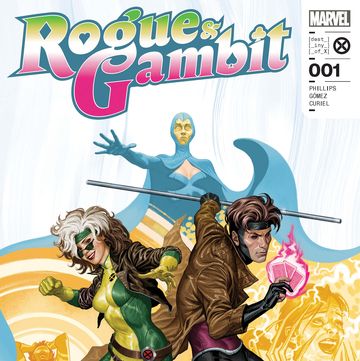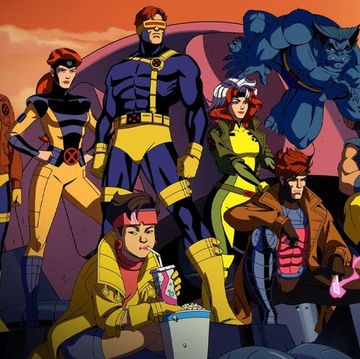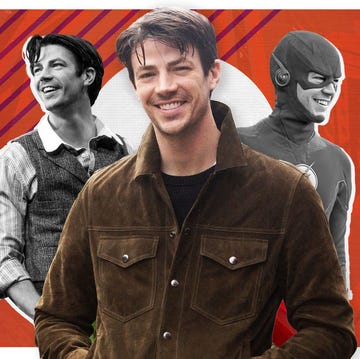- Dr. Manhattan has finally appeared on HBO’s Watchmen
- In episode 7 Dr. Manhattan is revealed to be on Earth and not on Mars as everyone assumed
- But, wait, why was Doctor Manhattan supposed to be on Mars? And what happened in the comics?
Well, he finally came back. For the last two months, HBO's Watchmen (a continuation of Alan Moore's graphic novel of the same name) has only teased Dr. Manhattan's return, showing us theater performances, history lessons, sayings ("nothing ever ends"), easter eggs, and long, giant Manhattan ... effigies. (Also dildos.) But last week, Manhattan was found to be hiding in plain sight: in the body of Cal Abar. Who would have thought?
Maybe nothing ever ends, but certainly some things do begin.
Manhattan first appeared in Alan Moore and Dave Gibbon’s 1986 literary sensation, Watchmen, which ran as a twelve-issue “maxiseries” and was later bundled into a graphic novel. In the Watchmen universe, Manhattan remains the most powerful being and the only character with actual superpowers. (He may be, in fact, the most powerful character in any cinematic universe.)
HBO Watchmen showrunner, Damon Lindelof, has said that Moore's comic is "canon," meaning that whatever existed in the comics potentially exists in the HBO series. That means when Manhattan returns in full (and not just his blue glow), he should retain the same powers and abilities of his comic self.
Before this happens or doesn't happen, however, one should remember that his powers acted as one of the major plot tensions in the comic; the existence of Manhattan literally changed the entire world, warming tensions with the Soviets, preventing nuclear war, and instituting some kind of battery-charging technology. Manhattan's powers are the most essential feature of the Watchmen universe, and the threat of Manhattan never returning to Earth was enough to well ... almost enact nuclear Armageddon. So Manhattan's return to Earth in HBO's series is big. Really big. Like, giant blue dildo big. And worth a character recap.
How did he gain those plot-changing powers in the first place? And who was he before he became that famous blue naked dude?
As Jonathan Osterman
Moore devotes Chapter IV of the graphic novel to Manhattan’s backstory. The sequence is framed by Doctor Manhattan’s decision to forgo life on Earth and build a home on Mars. His decision has potentially existential consequences, as his presence on Earth and allegiance with the U.S. military acted as a world-wide deterrent against nuclear war. With Manhattan on Mars, Earth teeters on the brink of nuclear holocaust.
As Manhattan sits on Mars and examines a photograph, the reader gains insight into the character's childhood and life before the accident. Manhattan was born Jonathan Osterman, son to a watchmaker father. (The “watchmen” of the novel’s title refers to the Roman author Juvenal’s “Satire VI,” containing the phrase “sed quis custodiet ipsos custodes?”—“But who will watch the watchmen?”—a question aimed toward unchecked power. The novel does, however, obsess over time and timekeeping; each chapter opens with a doomsday clock, ticking ever closer to midnight and nuclear Armageddon.)
Osterman’s father abandoned watchmaking after the U.S. dropped the atomic bomb on Hiroshima, when his son was 16. His father told him to instead pursue atomic physics. Osterman graduated Princeton with a Ph.D. and then began research on “intrinsic fields.” While conducting the research, he met Janey Slater, who he soon began dating. One day in 1960, after forgetting Slater’s watch in the intrinsic field chamber, Osterman was locked in the chamber and obliterated by the particle cannons. Jonathan Osterman was no more.
As Doctor Manhattan
Two months later, Osterman begins to slowly re-materialize. First his brain appeared and then later his eyeballs, circulatory system and body. Doctor Manhattan, “the superman,” is now born. Manhattan’s powers include matter manipulation (including his own body), telekinesis, teleportation, and limited clairvoyance. His perception of past, present, and future began to fuse, making him apathetic and misanthropic. It's implied that he's become immortal.
Still, Manhattan attempts unsuccessfully to rekindle his relationship with Slater. He also allies himself with the U.S. government, intervening and ending the war in Vietnam. Later, Manhattan joins the crimefighting outfit known as “The Minutemen,” where he meets Laurie Juspeczyk (“Silk Spectre”). The Minutemen, as well as all superheroes, are soon outlawed—Manhattan and Juspeczyk begin conducting research for the government, and the two commence in yet another (doomed) relationship. This continues until 1985, when a former Minutemen masked hero, The Comedian, is killed. Fed up with Manhattan’s growing apathy and convinced that others will also die, Juspeczyk leaves him. The separation coupled with accusations that Manhattan caused his former wife to develop cancer, leads Manhattan to flee Earth.
In an attempt to bring Manhattan back and save Earth from nuclear destruction Juspeczyk allows Manhattan to take her to Mars. She is able to reignite Manhattan's appreciation of the human species, and he agrees to return to Earth. In many ways, however, Manhattan is too late.
After Watchmen
The follow-up comic series to Watchmen, titled Doomsday Clock, finds Manhattan once again away from Earth. Manhattan has been traveling between universes, making contact with other DC comic heroes, including Flash and Superman. Manhattan believes Superman will cause universal destruction.
The final installments of this comic series will appear toward the end of 2019.
Character Significance
One of Alan Moore's creative intentions with the Watchmen series was to satirize the superhero concept. To this end, his universe is one filled with powerless crimefighters who behave less like altruistic crusaders and more like hooded thugs and assassins. The irony, of course, is that the one character who does retain traditional superhero abilities does so to the absolute extreme; to many, Manhattan is a god. That Manhattan becomes a worshipped figure also reflects the Cold War era's faith in nuclear weapons, which, at times, held a kind of religious fervor—the bomb was an object of worship. (Manhattan is also explicitly named after the "Manhattan Project," the codename for the research endeavor culminating in the first atomic bomb.)
